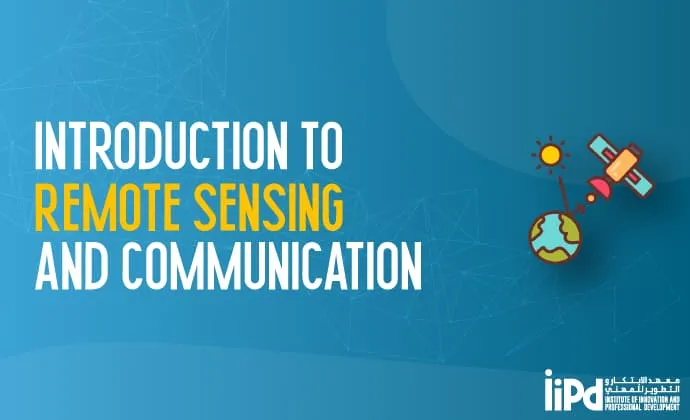
Course Details
This course provides an introduction to the field of remote sensing and its applications in communication. Remote sensing involves acquiring information about an object or phenomenon without making physical contact. The course covers the basic principles, technologies, and techniques used in remote sensing, along with an exploration of how remote sensing is utilized in communication systems and applications. Students will gain an understanding of the fundamental concepts, acquire practical skills, and explore the impact of remote sensing on various industries.
Objectives:
By the end of this course, students will be able to:
- Understand the fundamental principles and technologies of remote sensing.
- Explain the different types of remote sensing systems and their components.
- Describe the basic concepts of communication systems and how they are integrated with remote sensing.
- Recognize the applications of remote sensing in communication, such as satellite communication, wireless networks, and data transmission.
- Analyze remote sensing data and apply appropriate techniques for data interpretation and analysis.
- Evaluate the advantages and limitations of remote sensing in communication.
- Demonstrate proficiency in using remote sensing tools and software for data processing and analysis.
- Apply remote sensing techniques to solve real-world communication challenges.
- Critically assess the ethical, legal, and social implications of remote sensing in communication.
Course Outline
Read the detailed course outline below .
Introduction to Remote Sensing
- Definition and principles of remote sensing
- Electromagnetic spectrum and interaction with matter
- Sensors and platforms used in remote sensing
- Remote sensing data acquisition and sources
Remote Sensing Technologies
- Passive and active remote sensing systems
- Multispectral and hyperspectral imaging
- Lidar and radar remote sensing
- Global Navigation Satellite Systems (GNSS) and positioning
Communication Systems
- Basics of communication systems
- Transmission media and signal propagation
- Modulation techniques and signal processing
- Wireless communication networks and protocols
Integration of Remote Sensing and Communication
- Satellite communication systems
- Remote sensing data transmission and reception
- Sensor networks and Internet of Things (IoT)
- Remote sensing for environmental monitoring and disaster management
Remote Sensing Data Analysis
- Pre-processing and calibration of remote sensing data
- Image enhancement and feature extraction
- Classification and pattern recognition
- Data fusion and integration
Applications of Remote Sensing in Communication
- Remote sensing in weather forecasting and climate studies
- Earth observation satellites and data communication
- Remote sensing for wireless network planning and optimization
- Remote sensing in agriculture, urban planning, and transportation
Remote Sensing Tools and Software
- Introduction to remote sensing software packages
- Data visualization and analysis tools
- Hands-on exercises and case studies
Ethical, Legal, and Social Implications
- Privacy and security issues in remote sensing
- Data ownership and intellectual property rights
- Environmental impact and sustainability considerations
- Ethical frameworks and responsible use of remote sensing
Pre-Requisite:
- Understanding of Basic Communication Systems
- Knowledge about sensors & Protocols
- Engr Level candidates
Methodology:
- One to One – Hands on sessions
- On-Line Sessions(Batch)








